Simple to use online keyword grouping tool. No Sign Up or Login required
Paste up to 10,000 keywords and download your grouped keywords instantly
Create Groupings with your most important Metrics to identify the most valuable keyword topics
Coarse-Grained
Fine-Grained
| Cluster Name | Monthly Search | Keyword Count | |
|---|---|---|---|
| Cluster # 1 |
|
|
Cluster name12321 keywords
|
What are the winning or losing Keyword Topics of your website? If you have thousands of keywords you can’t easily answer that question. Looking at single queries will not tell you the full story. You can easily export your Search Terms out of Google Search Console together with KPIs like Impressions or Clicks and paste them to our free keyword grouper. You will not only get keyword groups, furthermore, all KPIs are aggregated for each keyword cluster.
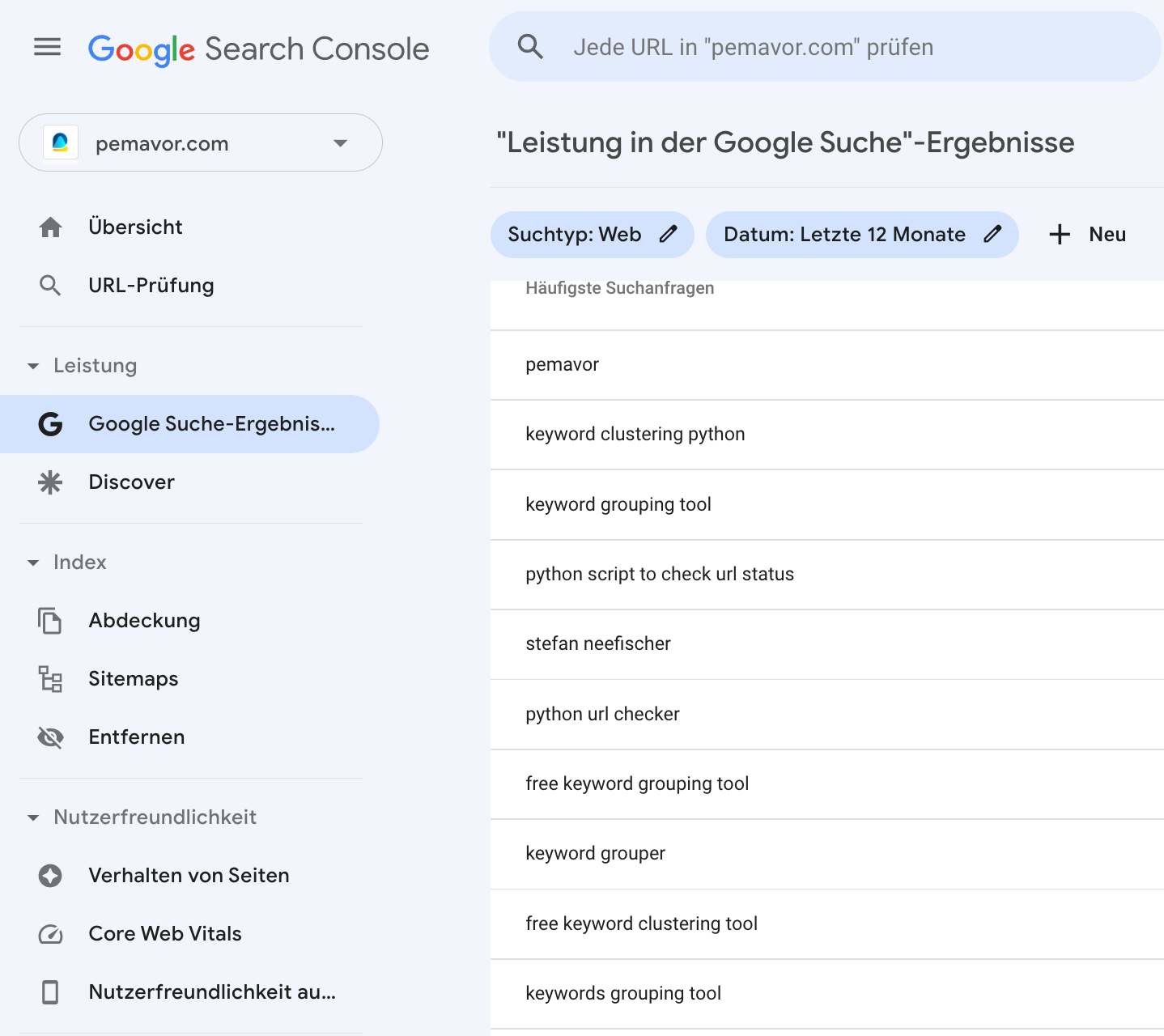
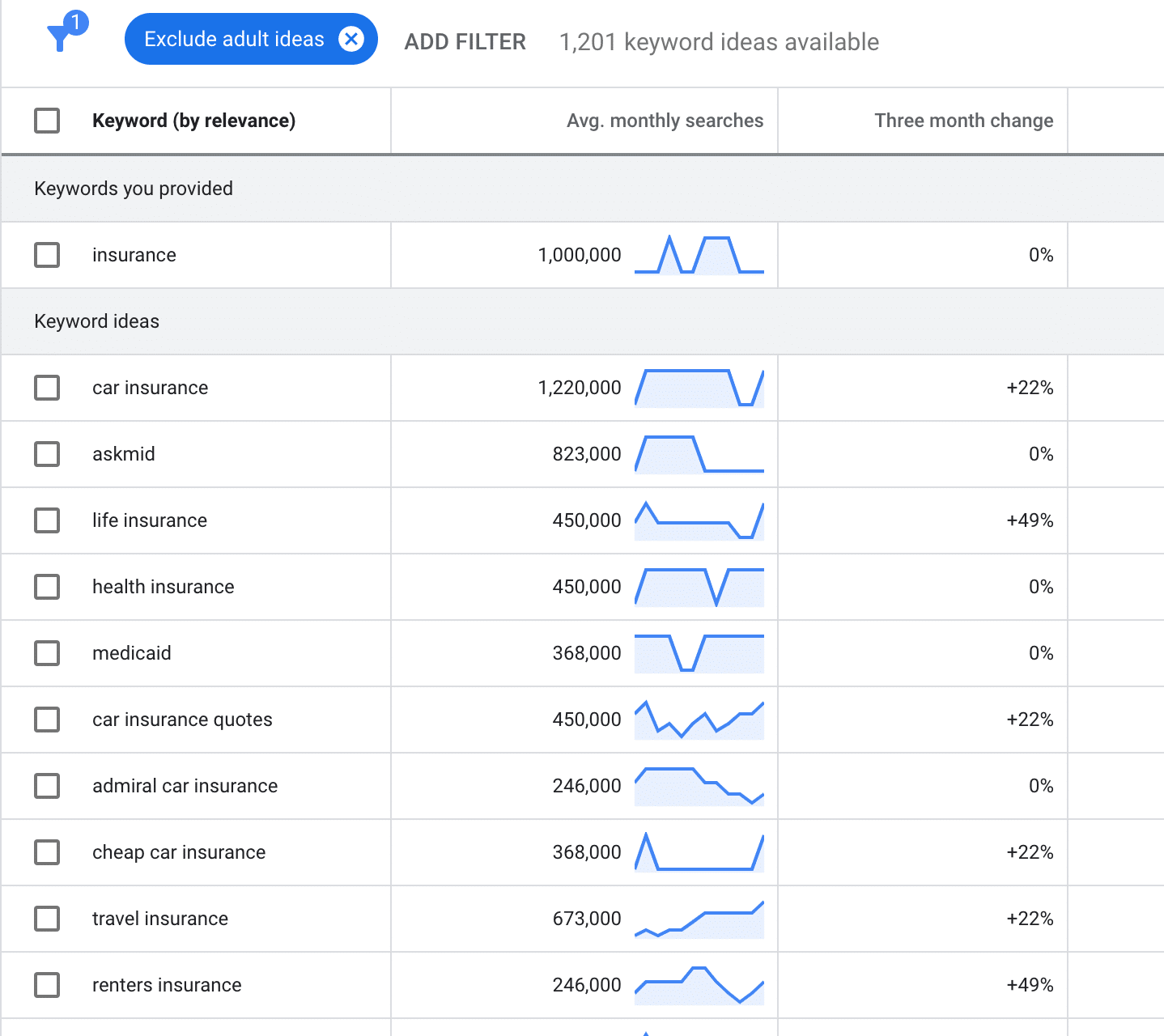
There are many tools out there to get keywords next to some KPIs like search volume or competition metrics. It is easy to get lost when you have thousands of keywords within those tools. Where to start if you have to define a good content strategy based on such a big keyword list?
Google’s recent changes in keyword match types often resulted in bad-performing queries. You can easily analyze the negative impact of close variant query matches here.
Having control over those queries and setting negative keywords at the beginning will minimize wasted ad spend and lead to better revenue. PPC Experts don’t fully trust the Google Ads black box when it comes to negative keywords. The following approaches will also help you find negative keywords for Amazon or Bing PPC campaigns.
You shouldn’t judge most of your search queries by only looking at their conversions. Depending on your overall conversion rate, you normally need some hundred clicks before making a good decision. Don’t look at complete queries, as they often limit your decisions.
Google announced to remove “not significant” search queries from their reports. That means the noise in your search queries is hidden now, or at least it takes longer than before to reach the “significant” level.
More data always gives better analysis. Select maximum and minimum value in a certain data range, and don’t apply any filters. That means your Search Term Reports easily reach file size above 100 MB. Most PPC managers first apply filters on the data because they struggle to handle those file sizes in Excel. Google added recently a large amount of Zero-Click Queries to the report which resulted in 6-7 times bigger reports.
Google sends more and more unique queries to your existing keywords by imposing close variant matching. When it comes to negatives, they give you hard limits per account, and you have to find a way to deal with them effectively.
Add up to 50,000 keywords to your favorite keyword source. You can use free sources like the Google Keyword Planner, Google Trends or Ubersuggest. However, you can also use paid keyword tools like Moz, Semrush or Ahrefs. Using your Google Ads search terms is also a good keyword source. If you add metric columns to your queries, our tool will make the aggregations for your keyword groups.
Use cases are different. You have the possibility to fine tune the keyword clustering results with two parameters. By setting the minimum cluster size, you avoid groups of keywords that contain too few keywords for your liking. The second parameter is the keyword group granularity. If you put the slider to the most right position, your keyword groups will be smaller and more granular.
Depending on the size of your keyword list, it’ll normally take seconds before downloading the result. The generated CSV file will contain one column with the keyword group ID and another column with the concatenated raw queries. If you provide additional metrics like keyword search volume or a calculated keyword value for your business, you’ll also find the aggregated numbers per keyword group in your file.
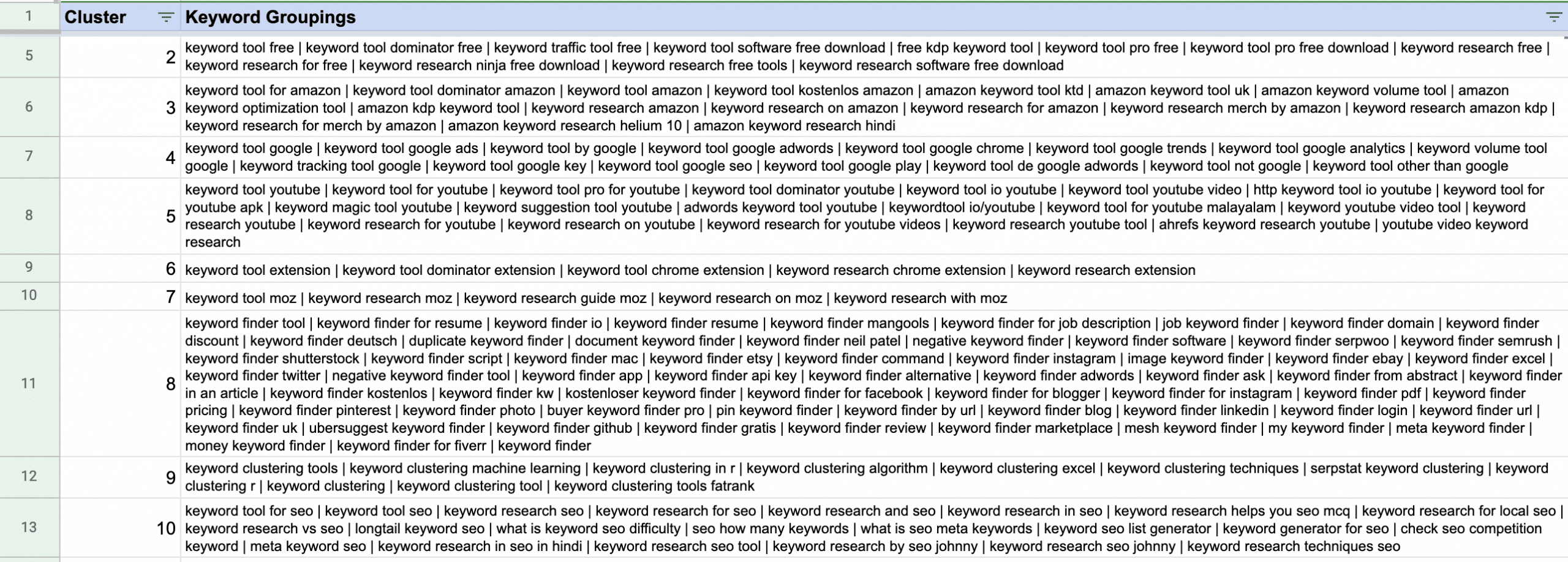
Google loves holistic content on your website. So does your website user. If you want to tell the full story to a user, you should start thinking about keyword topics instead of single keywords. Keyword Grouping helps to discover relevant aspects of a big topic. You can use the grouping results in big content hub pages on a single holistic page, but also link from there to several subtopics that appeared in some keyword clusters.
Everybody is searching for long-tail keywords with low competition. When you look at single keywords and judge them by their search volume, you probably won’t be successful in running a good long-tail strategy. If you cluster multiple micro niche keywords together, they suddenly appear as a new niche topic. Covering this keyword topic with good content will give good ranking potential.
If you provide additional metrics data to our keyword grouping tool, you’ll realize that the numbers get bigger right away. Many keyword groupings will cover a large amount of search volume. Without this grouping perspective, you would miss these opportunities, or probably make the wrong prioritization.
If you’ve a long list of keywords, how are you going to set your content strategy? We know Google loves holistic content that adds value to readers. Keyword grouping helps you understand what content fits your audience’s search intent. So you can use these results for a single, holistic page. If you link to a few subtopics that show up there in a keyword set, you can easily rank high in Google rankings. Using clusters, you can easily see which content can serve as the main content and which can serve as sub-content. This way, you’ll create your content plan for several months. Creating optimized content for your keyword groupings will help your SEO efforts. If you want to make your content search engine friendly, you can group your keywords by search intent or relevance. Proper keyword grouping will show that your content is more relevant and focused on a specific topic, which will help it rank higher in the SERP. This may seem time-consuming, but it’s highly beneficial to your digital marketing efforts.
Whatever your business is, you need to get traffic through SEO and PPC campaigns. Otherwise, how will you know if the users who find your site will be interested in it? Attracting attention is critical to the stages of the funnel. You don’t want to miss out on potential customers. However, how do you get more traffic from Google? You can get traffic by writing quality content. If you don’t rank for the keywords you want, it’ll be difficult to get traffic. And if you don’t get traffic, you won’t make sales. That’s why you need good keyword research. However, to be successful, it’s not enough to just use random keywords from your list. If you use keyword grouping tools, it’s easier to develop an effective content strategy. With effective keyword grouping, you can develop a content strategy that gets results. Plus, word grouping also benefits your PPC advertising efforts.
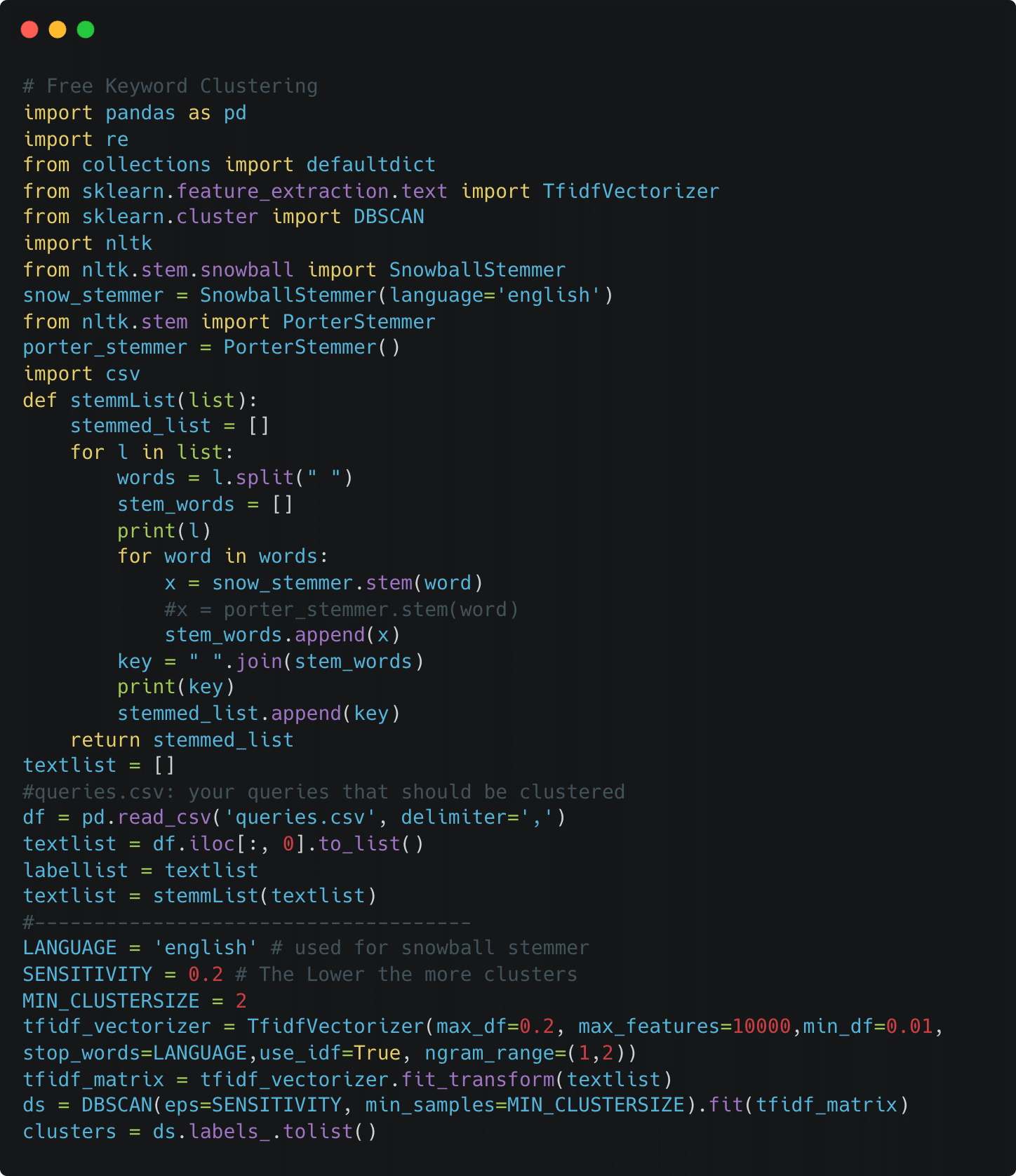
First, the keywords are transformed to lowercase. Every word within the complete search query is getting stemmed to its root form. To use cluster algorithms, every query is transformed into a vector representation. If you’re looking for ways to visualize your clusters, Python also has to plot libraries or modules that create nice-looking word clouds in just some lines of code.
In your free keyword grouping tool, we’re using TF-IDF weightings for every word in the vector space. There are different approaches that even go further. For example, you can use word2vec embeddings to cluster, even on their semantic meaning. It works great if you build a custom model for all of your keywords.
There’s also more than one way to do keyword clustering. K-means is a well-known clustering algorithm that can also be used on our keyword vectors. We’re using DBSCAN in our tool, where the number of keyword groups is found by the algorithm.
You find more about keyword grouping in Python in this post including a running Script. You will find detailed information about the concept that is used for keyword clustering.
Maybe our free keyword clustering tool offers everything you need, then stop reading at that point.
If you want to start coding to build the perfect fitting solution for your business, then you’ll find some nice approaches you can have a look at. Python is a great programming language for those kinds of tasks. It’ll enable you to build your own SEO tools.
Of course, you can also do keyword clustering in R – Python is just our choice for tasks like these. With Sklearn, Nltk, Gensim and Pandas, you have powerful modules to solve nearly every data science problem out there. All the mentioned cluster techniques like k-means or DBSCAN are part of those modules. If you’re searching for a way of visualizing your keyword clusters, you’ll find some plotting libraries as well as word cloud generators that write just some lines of code.
The next level of keyword grouping is to detect semantic similar queries and cluster them. Modules like word2vec will make this possible. Instead of using pre-trained vector models, you should consider building your own model with all keywords you know. You can also use the ranking web pages of these keywords and use its website content to further train the word2vec model. Word Mover’s Distance (WMD) on top of this vector model will give you great results in semantic keyword grouping.
When you have to cluster large amounts of keywords then approaches like K-Means will run into trouble. We have shared a Python Script that is able to group Gigabytes of keywords in a reasonable time. This solution considers also performance metrics for each keyword cluster to quickly identify the best performing keyword groups.
We shared also a ready to use Python Script that is using Network Clustering Algorithms based on the Google Search Results. By doing this you are able to group keywords by their semantic meaning in the way Googles Search Engine is thinking. This Script covers also fetching the SERPs for a keyword list by using Custom Search API.
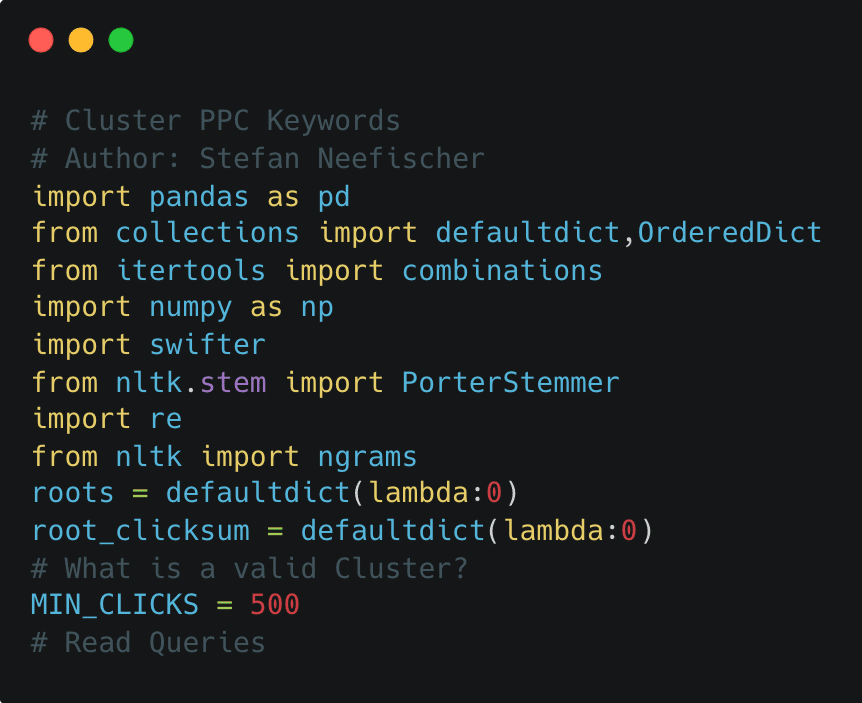

Not happy with your marketing and advertising campaign results? You probably need to organize your keyword lists into efficient keyword groups. Whether organic or paid search marketing, keyword grouping has a vital role in lifting your campaigns. Also, it’s a great way to create high-performing ad copies.
Keyword grouping can also boost your SEO efforts by creating optimized content for keyword clusters. It’ll increase the chances of your content to reach SERPs. You can group similar keywords into clusters and use them in your posts. It’ll make your content more readable and improve its chances of appearing on the search result page.
Keyword grouping is a list of related keywords based on users’ search intent.
It helps you speed up your SEO efforts and level up on-page optimization. After generating your keywords list, you shouldn’t group them randomly. Keep in mind the importance of relevance search intent.
Targeting a keyword with a single page is a played-out method. Today, you can target multiple keywords on a single page. Let’s suppose “dinner table” is your keyword. What are the related keywords of it? “dinner table design” or “dining table,” and more. These keywords also can be targeted by the same page.
You don’t need to create separate pages for these related keywords. Target them with a single post. Remember that sometimes, even if you don’t mention the keyword in a particular article, you can get it to rank. It’ll be the first step you need to take when you want to group the keyword list you have. You should decide which keywords will be in the main group. Then, target them on a single page.
After grouping keywords by relevance in the main group, you should group them based on the search intent, too. There’s an intent behind every search query performed on Google. That is, your main aim should be to create a page that can predict the intent in question. For example, “pen” is a broad term that it’s difficult to predict the users’ search intent. To understand the intent behind a search query, simply Google it. Then, check what comes up first. In the first place, you’ll see results that match the users’ intent.
In this case, you can get help from PEMAVOR’s free Autocomplete Keyword Tool to create keyword lists.
Google Ads is a great way to generate revenue for your business. Also, it’s a simple platform with easy-to-use tools. You don’t need any prior experience or skills to set up your account on Google Ads. All you need to do is enter some basic information about your company, and you’re all set! After reading some articles about Google Ads, you’ll have a picture in your mind of how to work its system.
The actions in your Google Ads account proceed for a certain hierarchy. You can manage your ad groups under your campaigns and your keywords and ads under your ad groups.
Furthermore, Google determines which ad to show in what order in an auction between advertisers’ bids. It’s called the Google Ads Auction. How can you win auctions between various competitors from your business?
Quality Score is an important value of each keyword to win an auction. The more relevant ads to your customers on the Google search page you have, the higher Quality Score you’ll get. Otherwise, you’ll have a poor Quality Score and a low Ad Rank. For sure, it affects your CTR negatively because your impressions can’t turn into clicks. Keep in mind that Google will also calculate CTR in the next auctions. If you don’t want to have poor performance in auctions, keep your CTR higher. But, how to keep a higher CTR? With keywords grouping. Once you’ve grouped your keywords suitable, your ads will be more relevant and have more chances to win auctions.
The actions in your Google Ads account proceed for a certain hierarchy. You can manage your ad groups under your campaigns and your keywords and ads under your ad groups.
Quality Score is the measurement of a keyword’s relevance and quality. It’s a numerical value that Google assigns to your keywords to value the quality of your ads. Keywords with higher relevancy to a user’s search query have higher Quality Scores. Google has an algorithm that evaluates hundreds of factors to show users relevant results in organic results. Also, it has created the quality score that affects the ranking and display of the ads to give a better experience by showing them relevant ads.
Many marketeers may target the same keyword. So, how Google ranks these ads? With Ad Rank! However, not the Quality Score but the Ad Rank Score determines your ad positions. Ad Rank is the estimated position of your ad on Google’s Search Engine Results Page. It takes into account factors such as current bid price and quality score. Besides, having a Quality Score of 10 doesn’t mean that your ads will be shown in higher positions. On the other hand, if you have a low Quality Score, your ads can get few impressions.
Furthermore, Google determines which ads to show in what order in an auction between advertisers’ bids. It’s called the Google Ads Auction.
You have keyword lists related to your ads within your ad groups. When a user searches for a keyword on Google, Google shows the ad related to that keyword. That’s why it’s important to create the right keyword groups.
Besides, you can manage your ad campaigns in Ad Group section in your account. You’ll see your keywords groups under Ad Groups. For example, you may give an ad campaign as “Nightdress sale”. Use keywords such as “night dress”, “night dress for party”, “night dresses sale”, and don’t include keywords “casual dress” or “business suit”.
You have only one ad group for the nightdress. When you bid to promote your nightdress products, all related keywords are grouped. When users search for something that matches your keyword, they may come across one of the ads related to that keyword. If you group your keywords randomly, it won’t be good for your business. Nobody wants to see an irrelevant ad. By the way, let’s underline once again the importance of grouping relative keywords.

Efficient keyword groups are a big plus for your overall account performance. If you create the right keyword groups, your Quality Score will increase, and your cost-per-click will decrease because your account’s relevance will also increase simultaneously.
Creating more content for keyword grouping will be more helpful for your digital marketing efforts, even though it takes more time.
We’re sure your website will be more Google-friendly and user-friendly.
It’s a great way to save money while running PPC campaigns because the right keyword grouping increases your CTR and Quality Scores. Also, it’ll affect your paid traffic positively.
Want to appear more relevant to the search engine? Let’s group your keywords effectively. Google doesn’t like irrelevant ads.
Thanks to efficient keyword grouping, your website will have correct structure. Also, it helps to avoid keyword stuffing.
Hopefully, we could help you get started with improving your digital marketing campaigns.
Now, it’s time to improve your ad campaigns and win auctions. No matter your business, try our free Keyword Grouping Tool. Let’s create effective keyword groupings and climb the ladder of success.